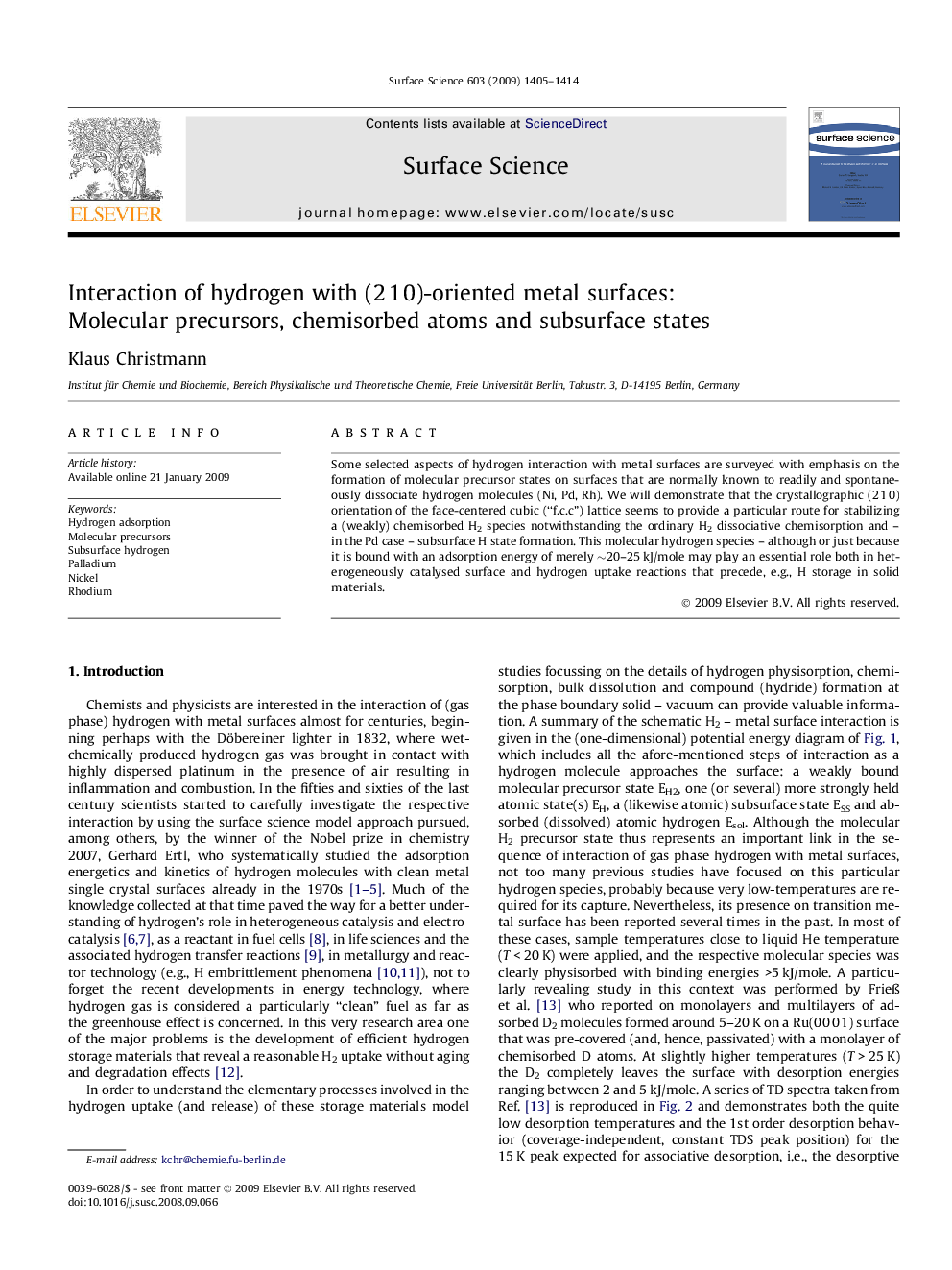| Article ID | Journal | Published Year | Pages | File Type |
|---|---|---|---|---|
| 5424195 | Surface Science | 2009 | 10 Pages |
Some selected aspects of hydrogen interaction with metal surfaces are surveyed with emphasis on the formation of molecular precursor states on surfaces that are normally known to readily and spontaneously dissociate hydrogen molecules (Ni, Pd, Rh). We will demonstrate that the crystallographic (2Â 1Â 0) orientation of the face-centered cubic (“f.c.c”) lattice seems to provide a particular route for stabilizing a (weakly) chemisorbed H2 species notwithstanding the ordinary H2 dissociative chemisorption and - in the Pd case - subsurface H state formation. This molecular hydrogen species - although or just because it is bound with an adsorption energy of merely â¼20-25Â kJ/mole may play an essential role both in heterogeneously catalysed surface and hydrogen uptake reactions that precede, e.g., H storage in solid materials.
